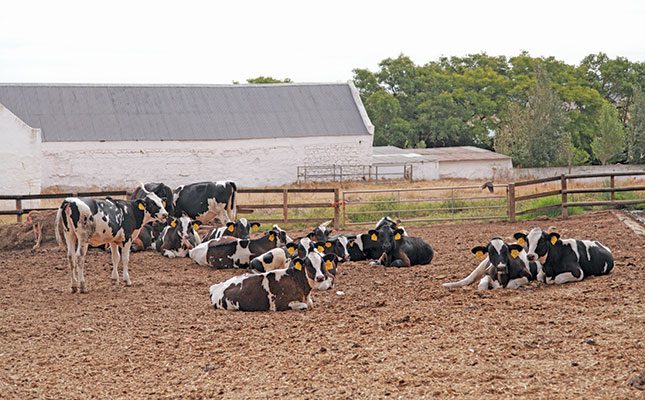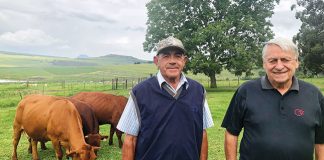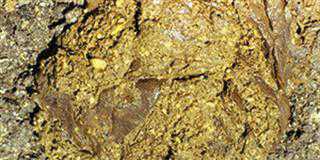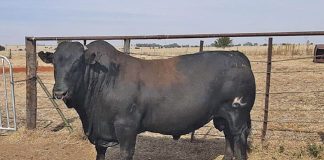
Photo: Glenneis Kriel
The genetic selection of animals for enhanced performance is one of the most reliable ways to improve a dairy farm’s profitability, with the return on investment usually paying off within five years.
This is according to Rebekah Mast, associate vice-president of genetic dairy solutions and
talent development at World Wide Sires and Select Sires, who spoke at the Dairy
Management Consulting conference held recently in Durbanville, Western Cape.
Nevertheless, the genetics strategy must be combined with a good management policy, because even the performance of genetically superior animals will be mediocre if they are not fed and managed properly.
When developing a genetic strategy, a farmer needs to understand what makes a cow profitable, and how the entire herd can be made profitable.
These considerations, according to Mast, should focus not only on what is happening today, but on what the farmer’s ideal cow or herd will look like within the following five years.
Unfortunately, there is no ‘one-size-fits-all’ solution: the ideal cow and herd will differ from farm to farm, even neighbouring farms, due to differences in climatic conditions, infrastructure, management and marketing.
The farmer should therefore work with a genetic adviser to identify a selection strategy that will create the best animals for the prevailing production conditions. The strategy should also be re-evaluated regularly and adapted, if necessary, to changing circumstances.
Get the basics right
A few fundamental principles nonetheless hold true for all dairies and can greatly influence profitability, says Mast. Firstly, keeping heifers incurs costs during the first two years of their lives, as they are feeding and require labour during this time, but don’t give anything back until later.
Secondly, it generally takes between 1,5 and two lactations for rearing costs to be repaid, with most cows yielding a profit only from the third lactation onwards. Moreover, it costs the same to raise a poorly performing animal as it does a high-performing one. The farmer therefore needs to use selection and culling strategies to raise only those animals that will yield high returns later in their lives.
Thirdly, while most cows only make it to the third lactation before being culled, they become increasingly profitable the longer they are kept. The producer should thus strive to use selection strategies to keep his or her cows for longer.
To cull, or not to cull
According to Mast, reasons for culling cows include reproductive issues, low milk production, lameness and mastitis. (Conference delegates identified reproduction and mastitis as their biggest issues.)
This does not mean, however, that there should be more old than young animals in a herd. Rather, a farmer should constantly monitor production to identify the cows that should be culled, and create a good balance between ‘old’ and ‘new’ genetics.
There are two tools at hand to help take the guesswork out of selection and culling choices: estimated breeding value, which gives an indication of the genetic potential of the parent material available; and the genomic evaluation of calves to identify their genetic potential.
According to Mast, significantly more farmers are using genomic testing to predict the genetic potential of their female animals more accurately.
“Farmers initially saw genomic testing as something reserved for elite breeders, and later as a way to identify the calves that should be sold. These days, however, they are testing all of their heifers in recognition of the important role these animals play in the future of their dairies.”
Important traits
While milk production is one of the main drivers of revenue on a dairy farm, the producer should not place all the emphasis on the traits associated with high milk yield when developing a genetic strategy.
“A high milk [yield] won’t mean a thing if a cow is constantly sick, resulting in most of her milk being thrown away; if she has fertility problems that negatively affect the time between lactations; or if she lasts for only two or three lactations.”
Daughter pregnancy rate (DPR), which includes parameters such as heat detection and conception rates, is more important, as it gives an indication of the percentage of daughters eligible to become pregnant in a 21-day period that actually do fall pregnant.
In a study quoted by Mast, genetic testing of a group of first-lactation Holstein cows revealed a 12-day difference between the best-performing and poorest-performing animals in terms of the time it took them to fall pregnant, with each day out of lactation representing a loss of R46/cow.
A survey of Jersey cows revealed the same 12-day difference for first-lactation cows, but this increased to 21 days for second-lactation cows.
Productive lifespan is another important characteristic, as it is an indication of a cow’s ability to avoid being culled for any reason.
Instead of looking at a cow’s entire lifespan, this trait is determined by looking at the 10 months or roughly 305 days after the cow has calved, and giving higher scores to those cows that calve regularly and spend more time in peak production.
In an example provided by Mast, two bulls, 14HO07770 Helix and 7HO14578 Foxcatcher, were compared using predicted transmitting ability, a tool for measuring the performance difference between the offspring of two animals. It was determined that Helix’s daughters would have a higher milk production value, as they were expected to produce almost 225kg more milk in a mature lactation than Foxcatcher’s daughters. This equated to less than 1kg milk/day.
“Milk [production] is important, but you have to ask yourself if it will be the biggest driver of your profitability. If your production is below the US average of 12 734kg/lactation or 41,8kg/ day for Holsteins, and below 9 667kg/lactation or 31,7kg/day for Jerseys, any average bull will help to increase milk yield. It would only really make sense to use higher-yielding genetics if you’re looking to significantly increase production.”
In terms of DPR, however, Foxcatcher’s daughters were expected to have a 3,9% higher pregnancy rate in each breeding cycle than Helix’s daughters. This meant that the former were open for 16 days less than the latter.
Foxcatcher’s daughters were also predicted to have production lifespans averaging four months longer than those of Helix’s daughters.
Breeding indices
Rather than selecting for specific genetic traits to fix problems in a herd, farmers should use selection indices, which take into consideration a collection of traits that will result in specific outcomes.
The different indices accentuate different traits (see table), and the suitability of any one index to a dairy farm depends on the specific requirements of the farm. World Wide Sires’ Herd Health Profit Index (HHP$), for example, emphasises mastitis resistance, while World Wide Sires’ GrazingPRO Index focuses more on fertility.
For calving ease or calving ability, and reducing stillbirths, farmers may find the GrazingPRO Index to be the most useful.
No matter which index a farmer chooses, it will have a major influence on herd performance. To illustrate, Mast refers to a study conducted at Larson Acres dairy farm in Wisconsin, US. Here, the genetics of second-lactation cows were ranked according to the following indices: Zoetis’s Dairy Wellness Profit Index (DWP$), the HHP$, and the Holstein Association USA’s Total Performance Index (TPI).
All of these indices helped to rank the animals in terms of fertility and milk production: the top 25% had significantly higher yields and fewer days open than those in the bottom 25% of each index.
With regard to health, however, the TPI did not differentiate much between animals in the top and bottom of the group. The HHP$ did the best job in separating top- and poorly performing animals when it came to somatic cell counts and mastitis, while use of the DWP$ resulted in lower culling rates and fewer incidences of disease.
Another study found that cows ranked in the top 25% for the DWP$ generated US$894 (around R15 000) more profit over their lifetime than those in the bottom of the group, according to Mast.
Calf longevity
Another major problem in dairies is the number of calves that die before they start to turn a profit at the third lactation. To solve this issue, since 2016, World Wide Sires has been using genetic parameters for wellness traits in calves developed by Zoetis.
“The idea behind this is to allow farmers to select genetics that produce calves that are more resistant to diseases and stress early in life, as calves that fall ill early in life never really catch up with those that are always healthy,” Mast explains.
Different indices are used for Holsteins and Jerseys, as the impact of disease differs between the two breeds. For Jerseys, there is a greater focus on calves’ liveability and resistance to scours, while in Holsteins more emphasis is placed on calves’ resistance to respiratory disease.
“Scours, one of the main diseases of Jersey calves, can have a lifelong effect on profitability, as it can delay growth and maturity, and have a [negative] impact on lifetime production.”
Research quoted by Mast illustrates the significance of calf wellness traits. In the study, conducted by Victory Farms in South Dakota, US, 6 845 of the farm’s Jersey calves were ranked according to Zoetis’s scours-resistance wellness trait. Only 12% of the calves in the top 25% genetic group ended up with scours, whereas 70% of those ranked in the worst 25% in terms of genetics developed the disease, even though they were subjected to the same production conditions.
“What this means for the [Victory Farms] herd is that losses can be reduced from eight to three in every 100 simply by selecting genetics that are associated with calf liveability.
“This becomes especially important for precision breeding, when [exactly] the right number of calves need to stay alive.”
Go for reputation
Mast emphasises the value of using a reputable company for genomic evaluation: “You get what you pay for, so simply use the [free] parent-average information if you cannot afford good-quality evaluations.”
As most mortalities occur within the first four months of the animals’ lives, calves should be tested only once they have made it through this period, as it doesn’t make sense to spend money on sick calves.
“If a calf has pneumonia or scours, sell it. It will never catch up to the healthy ones, regardless of its genetic potential.”
Email Rebekah Mast at [email protected].











